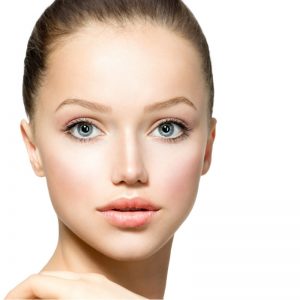PDO Threads
Getting older happens to us all, and one of the worst parts is watching the way our face changes. Many of us get to look in the mirror and hate what we see. Is your face starting to sag or your eyelids beginning droop? Do you have jowls at your jawline? And do you find yourself avoiding the mirror because you are so self-conscious of what you see looking back at you?
Every year, the demand for aesthetic procedures that do away the signs of ageing is rising. An increasing number of men and women are seeking ways to slow down the process of ageing. Nowadays, treating the upper face wrinkles with Botox injections is quite common among women. Even younger women in their mid-20s, who use it as the preventive measure. Fillers are in demand to even out the marionette lines, nasolabial folds, cheek and lip augmentation. This helps in restoring the youthful facial volume.
Recently, a relatively new treatment has hit the non-surgical aesthetic treatments market known as PDO thread lift treatment. The treatment involves the use of biodegradable threads for lifting and tightening the loose and sagging skin. Though numerous aesthetic clinics are now offering PDO thread Facelift treatment with different names such as Contour lift, Silhouette lift etc., there are only few who are trained and experienced in administering the procedure.
Many of you may not even know about this revolutionary procedure which has evolved from a rather ineffective thread lifting procedure of the 90s. Now, this procedure offers effective results that are considered as an alternative to the surgical facelift procedure. Here is an overview of what is it, how it works, its benefits, risks and complications involved.

What is PDO Thread Lift?
It is an outstanding minimally invasive aesthetic technique of lifting and tightening the loose and sagging tissues of the skin. It originated from the combination of traditional philosophy of thread lift in the Western medicine. The therapy of thread embedding used on the Oriental Acupuncture treatment for controlling and improving stimulation of tissues as well as the contraction of muscles.
What is PDO?

PDO is basically a short abbreviation of polydioxanone which are absorbable synthetic sutures widely used in surgeries for wound closing and stitching, manufactured from polydioxanone.
The PDO threads are preloaded in fine needles which are inserted into subcutaneous skin layer for creating a lifting and tightening effect. The needles are then taken out and thread stays behind in the skin. When dozens of needles are inserted with threads into the skin, it activates the natural regeneration process of skin and stimulates the wound healing process along with tissue contraction.
Recent developments in the procedure
Recently, cog threads have been introduced in the treatment. It is a move from the use of monofilaments to the use of barbed threads. Due to this new invention, a higher chronic inflammatory reaction is induced which cause higher fibroblast conversion rate during the process of wound healing.
This results in giving longer lasting results with highly noticeable effects just after a single treatment.
Treatment areas
In the face, it can be effectively used for lifting eyebrows, nasolabial folds, cheeks, double chin, marionette lines, and jawline.
In the body, these threads can be used for tightening and firming of loose skin of arms, abdomen, and thighs.
The PDO Thread Lift Procedure
By using a super fine needle, PDO thread is inserted underneath the skin. Depending on the treatment area, the threads are inserted either into the skin itself or in the subcutaneous fat layer or into the muscle. The patient can immediately see the lifted and tightened appearance. However the results of the treatment progressively improves as the PDO threads get absorbed into the skin over a period of 6-8 months. Stimulating neocollagenesis which in turn causes collagen production. The overall texture and skin appearance will continue to improve making it tight, thick and firm.
The results of the treatments last anywhere between 2-3 years.
Ideal candidates
It is best for the people, both men and women, who just started experiencing mild skin sagging of mid and lower face with noticeable jowls and neck skin sagging.
Side effects
Although it is a quite safe procedure and complications occur in rare instances. Some minor side effects occur including redness, swelling, bruising and mild scarring with skin tightness which usually subside in few weeks following the treatment.




